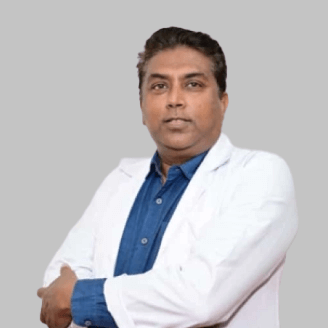-
Doctors
-
Specialities & Treatments
Centre of Excellence
Specialties
Treatments and Procedures
Hospitals & Directions HyderabadCARE Hospitals, Banjara Hills CARE Outpatient Centre, Banjara Hills CARE Hospitals, HITEC City CARE Hospitals, Nampally Gurunanak CARE Hospitals, Musheerabad CARE Hospitals Outpatient Centre, HITEC City CARE Hospitals, Malakpet
HyderabadCARE Hospitals, Banjara Hills CARE Outpatient Centre, Banjara Hills CARE Hospitals, HITEC City CARE Hospitals, Nampally Gurunanak CARE Hospitals, Musheerabad CARE Hospitals Outpatient Centre, HITEC City CARE Hospitals, Malakpet Raipur
Raipur
 Bhubaneswar
Bhubaneswar Visakhapatnam
Visakhapatnam
 Nagpur
Nagpur
 Indore
Indore
 Chh. Sambhajinagar
Chh. SambhajinagarClinics & Medical Centers
Book an AppointmentContact Us
Online Lab Reports
Book an Appointment
Consult Super-Specialist Doctors at CARE Hospitals

Vascular & Non-Vascular Pulmonary Interventions
Vascular & Non-Vascular Pulmonary Interventions
Pulmonary Vascular & Non-Vascular Interventions in Hyderabad, India
The term vascular disease refers to any condition that affects your blood vessels. The vascular or circulatory system refers to this network. The word "vascular" comes from the Latin word for the hollow container. Even if your entire blood vessel system was stretched end-to-end, it could circle the globe several times.
PVD refers to a wide range of conditions affecting the blood vessels throughout the lungs. Oxygen-depleted blood flows from the right side of the heart to the lungs through these vessels. During the process of taking up oxygen, deoxygenated blood travels through the pulmonary arteries. After leaving the lungs, pulmonary veins take oxygenated blood to the left side of the heart, where it is distributed throughout the body. By continuously breathing out carbon dioxide, the blood is refilled with oxygen. As well as causing cardiovascular problems, a pulmonary vascular disorder can reduce a patient's quality of life.
CARE Hospitals provide highly specialised, multidisciplinary care to patients with complex pulmonary vascular conditions. The pulmonologists and cardiologists in our group work closely together and with cardiac and thoracic surgeons and other cardiologists.
Symptoms of Pulmonary Vascular Disease
Pulmonary embolism
The following symptoms of pulmonary embolism may be experienced by people with pulmonary embolism:
- Breathlessness
- Chest pain
- Cough
- Coughing up blood
- Fever
- Rapid heart rate
- Rapid breathing
- Fainting
- Pulmonary Hypertension
Pulmonary hypertension may cause the following symptoms:
- Breathlessness
- Extreme tiredness (fatigue)
- Reduced ability to exercise
- Chest pain
- Coughing up blood
- Hoarseness
Causes of Pulmonary Vascular Disease
- Pulmonary Embolism: A blood clot in the legs or pelvis usually results in a pulmonary embolism. It is possible for this blood clot to break off and travel through the vein to the pulmonary artery. People who have recently undergone medical or surgical procedures that resulted in prolonged bed rest, people with a prior history of blood clots, and people using hormone replacement therapy or oral contraceptives are at an increased risk of developing blood clots.
- Pulmonary hypertension: The cause of pulmonary hypertension can be genetic, or sometimes there is no known reason (idiopathic). Pulmonary hypertension takes many forms, each of which is treated differently. According to doctors, it can be divided into five groups:
- Different causes can lead to pulmonary arterial hypertension (PAH).
- Diseases of the left heart can cause pulmonary arterial hypertension.
- The condition of having high blood pressure due to lung disease or oxygen deficiency (hypoxia).
- Chronic thromboembolic pulmonary hypertension is also called thromboembolic pulmonary hypertension.
- The causes and triggers of thromboembolic pulmonary hypertension are unclear.
What is the Diagnosis of Pulmonary Vascular Disease?
A range of diagnostic tests is employed to identify Peripheral Vascular Disease (PVD) and specify the particular disorder, complemented by a comprehensive medical history assessment. These tests provide valuable insights into the condition's nature and severity. The following tests are commonly utilized:
- CT Scan: Computed Tomography (CT) scans use X-rays to create detailed cross-sectional images of the body. In the context of PVD, CT scans can reveal abnormalities in blood vessels and assess blood flow.
- Echocardiogram: An echocardiogram utilizes ultrasound waves to generate real-time images of the heart. This test helps assess the heart's pumping function and detect any abnormalities in the blood vessels.
- Chest X-ray: Chest X-rays are employed to visualize the heart and lungs, providing information about their structure and potential signs of vascular issues or related conditions.
- Right Heart Catheterization and Vasodilator Testing: This invasive procedure involves the insertion of a catheter into the heart to measure pressures and assess blood flow. Vasodilator testing is often performed concurrently to evaluate the response of blood vessels to certain medications.
- Pulmonary Angiogram: A pulmonary angiogram is a diagnostic imaging technique that uses contrast dye and X-rays to visualize the pulmonary arteries. It can identify blood clots or other abnormalities affecting blood flow in the lungs.
These tests help the doctors understand what's going on in your body and decide on the best way to treat the problem based on what they find.
Treatment options for Pulmonary Vascular Diseases
The treatment of pulmonary vascular diseases involves a comprehensive approach aimed at managing symptoms, improving quality of life, and addressing the underlying causes. The choice of treatment depends on the specific type and severity of the pulmonary vascular disease. Here are some in-depth details about treatment options:
- Medications:
- Vasodilators: Drugs that relax and widen blood vessels, reducing the workload on the heart and improving blood flow. Examples include calcium channel blockers, prostacyclin analogs, and phosphodiesterase-5 inhibitors.
- Anticoagulants: To prevent blood clots and reduce the risk of pulmonary embolism.
- Diuretics: To manage fluid retention and reduce strain on the heart.
- Oxygen Therapy: Supplemental oxygen is often prescribed to ensure that the body receives an adequate supply of oxygen. This is particularly important in conditions where there is impaired oxygen exchange in the lungs.
- Pulmonary Rehabilitation: Customized exercise programs and education to improve physical endurance, lung function, and overall well-being.
- Lung Transplantation: In severe cases where other treatments are ineffective, a lung transplant may be considered. This is typically reserved for patients with end-stage pulmonary vascular disease.
- Pulmonary Endarterectomy: Specifically for chronic thromboembolic pulmonary hypertension (CTEPH), this surgical procedure involves removing blood clots from the pulmonary arteries to improve blood flow.
- Balloon Pulmonary Angioplasty: Another intervention for CTEPH, this procedure involves inflating a balloon in the narrowed pulmonary arteries to widen them and improve blood flow.
- Inhaled Therapies: Inhaled medications, such as prostacyclin analogs or nitric oxide, may be used to dilate blood vessels directly in the lungs.
- Targeted Therapies: Advancements in understanding the molecular mechanisms of pulmonary vascular diseases have led to targeted therapies that aim to modify the disease process at a cellular level.
- Antibiotics and Antiviral Medications: In cases where infections contribute to pulmonary vascular diseases, appropriate antibiotics or antiviral medications may be prescribed.
- Lifestyle Modifications: Smoking cessation, maintaining a healthy diet, regular exercise, and managing other health conditions like diabetes and hypertension are crucial components of managing pulmonary vascular diseases.
How is Pulmonary Vascular Disease Treated?
Pulmonary embolism
- It is often difficult to diagnose a pulmonary embolism. The diagnosis is made by identifying symptoms and looking at a person's medical history, along with routine tests such as chest x-rays and electrocardiograms.
- A blood test, called a D-dimer, can be conducted to rule out pulmonary embolism, as well as computed tomography (CT) angiography, an imaging technique involving x-rays, CT scans, and magnetic resonance imaging (MRI).
- In an emergency situation, a test called a bedside echocardiogram can help diagnose PE. Ultrasound is used to create images of the heart. Furthermore, ultrasounds can check for clots in the pelvic or leg veins, which could contribute to PE.
- Pulmonary embolism can be treated with drugs known as anticoagulants. People with breathing difficulties can also receive additional oxygen. Patients with persistent heart failure and a high risk of PE are often prescribed thrombolytic drugs, which dissolve clots in the pulmonary arteries. Surgery to remove the clot is another option if these treatments don't work.
Pulmonary hypertension
- When it comes to pulmonary arterial hypertension (PAH), it is difficult to make an early diagnosis since many patients have few or no symptoms or simply appear unfit. An individual diagnosed with PAH may develop it at any age, but the average (mean) age is 50.
- The doctor looks at a person's symptoms and other factors like age and existing medical conditions to determine a diagnosis. People who are showing signs of right heart failure often seek medical attention late in the disease process.
- Pulmonary hypertension is not curable, though basic drugs, such as anticoagulants or oxygen supplements, can ease its symptoms. A patient with pulmonary arterial hypertension may be treated with various therapies, such as prostacyclin, endothelin receptor antagonists, or type 5 phosphodiesterase inhibitors.
- By removing the clot and scar material in the blood vessels (arteries) of the lungs, pulmonary endarterectomy can cure pulmonary hypertension caused by chronic thrombo-embolic disease.
A lung transplant may be considered if the condition is severe. Treatment of the underlying condition is recommended if pulmonary hypertension is associated with heart or lung diseases.
Our Doctors
-

Dr. Tarun Gandhi
MS, FVES
Vascular & Endovascular Surgery
View More -

Dr. P C Gupta
MBBS, MS, FICA, FIVS (Japan)
Vascular & Endovascular Surgery
View More -

Dr. Ashish N Badkhal
MBBS, MS, MCh
Vascular Surgery
View More -

Dr. Ashok Reddy Somu
MBBS, MD, FVIR
Vascular & Interventional Radiology
View More -

Dr. B. Pradeep
MBBS, MD, DNB, FRCR CCT (UK)
Vascular & Interventional Radiology
View More -

Dr. Gnaneswar Atturu
MBBS, MS, DNB, MRCS, FRCS, PgCert, Ch.M, F.I.P.A, MBA, PhD
Vascular & Endovascular Surgery
View More -

Dr. Mustafa Razi
MBBS, MD
Vascular & Interventional Radiology
View More -

Dr. N. Madhavilatha
MBBS, MS, PDCC
Vascular & Endovascular Surgery
View More -

Dr. Radhika Malireddy
MBBS, DNB (General Surgery), DrNB (Plastic & Reconstructive Surgery), Post-Doctoral Fellowship in Diabetic Foot Surgery
Vascular & Endovascular Surgery
View More -

Dr. Rahul Agarwal
MBBS, DNB (General Surgery), FMAS, DrNB (Vasc. Surg)
Vascular & Endovascular Surgery
View More -

Dr. Rajesh Poosarla
MBBS, MD, DNB, DM (Gold Medalist), EBIR, FIBI, MBA (HA)
Interventional Radiology
View More -

Dr. S. Chainulu
MBBS, DNB (Radio-Diagnosis)
Vascular & Interventional Radiology
View More -

Dr. Santhosh Reddy K
MBBS, MD
Radiology
View More -

Dr. Surya Kiran Indukuri
MBBS, MS (General Surgery), DrNB (Vascular & Endovascular Surgery)
Vascular & Endovascular Surgery
View More -

Dr. V. Apoorva
MBBS, MS (General Surgery), DrNB Vascular surgery
Vascular & Endovascular Surgery
View More -

Dr. Vamsi Krishna Yerramsetty
MBBS, DNB, FIVS
Vascular & Endovascular Surgery
View More -

Dr. Venugopal Kulkarni
MBBS, MS, MRCS, FRCS
Vascular & Endovascular Surgery
View More
Frequently Asked Questions
Still Have a Question?

